
Sandmarc Aerial Filters for the DJI Phantom 4 Pro provide ND4, ND8, ND16, and PL (polarizing) options for adding filtration to the drone’s built-in camera.
If you own a drone you will be well aware of how much shutter you need to dial in to produce correct exposure when flying. Too much shutter combined with a relatively low bitrate codec produces jittery and overly sharp imagery. To correct this you need to use ND filters of varying strengths depending on what conditions you are flying in.
Slow the shutter, add ND
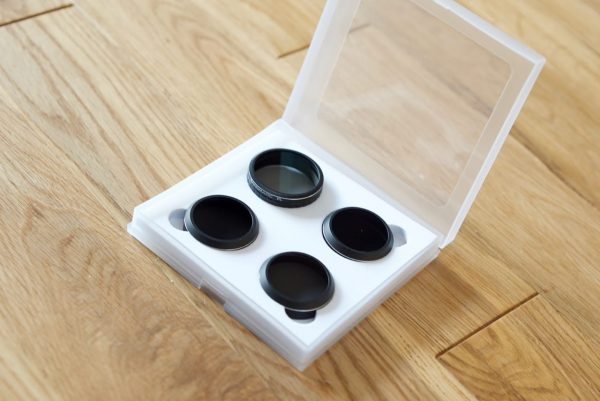
The Sandmarc ND filters give you the option to apply two, three or four stops of ND. In normal sunny conditions three stops of ND is enough to get your shutter speed down to 1/100 when you set the aperture around f/5.6. For me personally I think that 1/100 shutter is the sweet spot when flying drone in most situations. I think if you try and stick to the 180 degree shutter rule, (ie 1/50 or 1/60 of a second), it’s not enough shutter and your images end up too blurry. The only case where I do tend to use 1/50 or 1/60 shutter is if I am getting shots with the drone when it is just hovering and not moving.
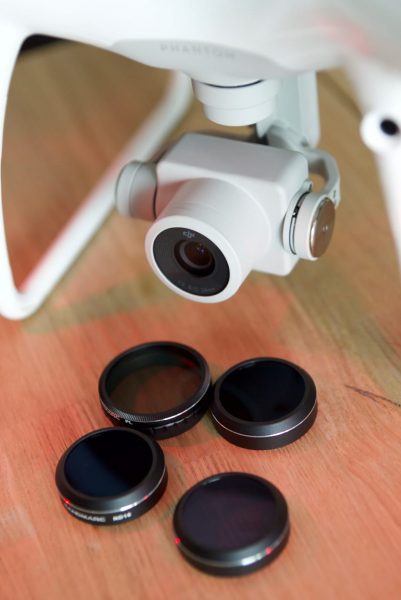
The ND16 (four stops of ND) filter is useful if you are flying in really bright conditions, but there may well be scenarios such filming over snow when the sun is out where even ND16 won’t be enough. I would have liked to have seen Sandmarc include an ND32 filter (five stops) for this reason.
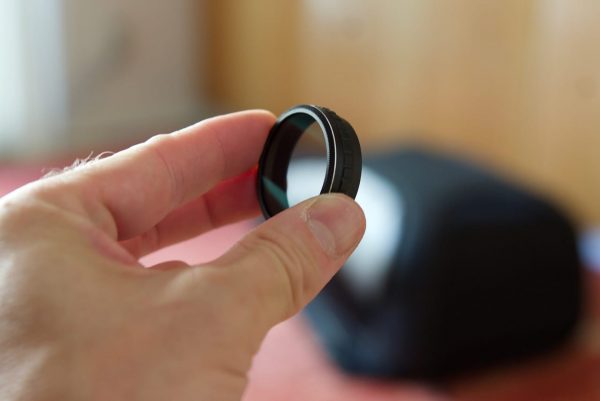
Sandmarc also gives you a PL (polarizer filter) that you can use instead of ND. The PL filter is useful for helping to eliminate glare (particularly important when flying over water), and reflections.
Build quality
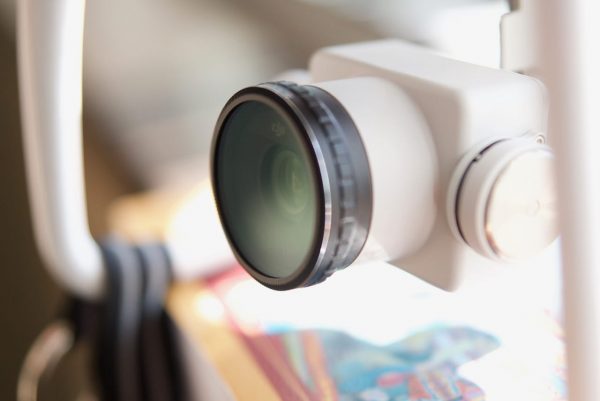
The filters are made out of multi-coated glass and are lightweight enough that they won’t affect the performance of the Phantom 4 Pro’s gimbal. The frames of the filters are made of industrial grade aluminium. I found the filters to be well made and I doubt they would break easily.
How you install them

To put the filters on your Phantom 4 Pro you need to carefully unscrew the front filter that is already on the Phantom 4 Pro’s camera.
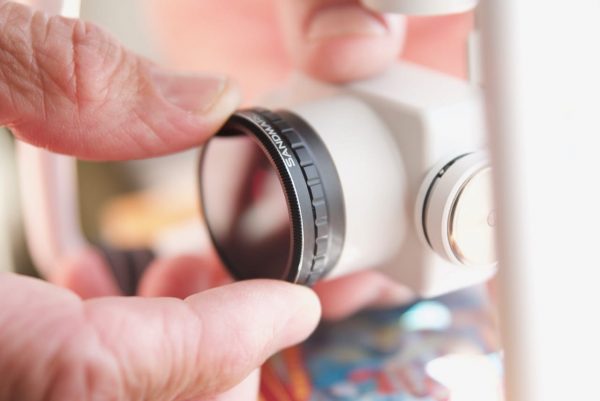
Once this is off you screw on the Sandmarc filter until it is tight. Make sure you line the filter up to avoid stripping the thread. You also don’t want to overtighten the filter as you may end up finding it hard to remove. All this should be done while the Phantom 4 Pro is powered off.
Sandmarc Aerial Filters: How do they perform?
ND filters can provide good and bad results depending on the quality of the glass that is used. A lot of ND filters, particularly once they reach a certain strength, can produce colour shifts. So how do the Sandmarc filters fare? I decided to do a test to see if there was any loss in sharpness or any colour shifts when using the ND filters.
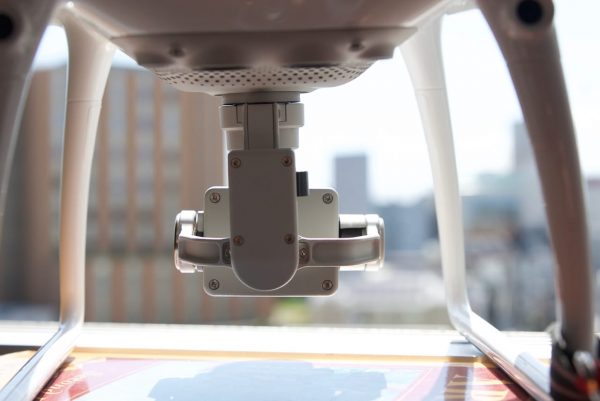
I set the Phantom 4 Pro so I could keep not only the shot consistent throughout the test, but also the parameters of the settings. The Phantom 4 Pro was set to its standard picture profile, the ISO kept at 100, the aperture kept at f/5.6, and the white balance was at 5600K. The only parameter that changed when adding the ND filters was the shutter speed.
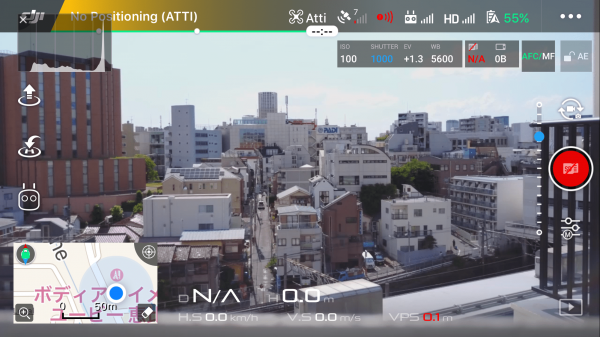
From my tests I found the Sandmarc ND filters did a good job at maintaining sharpness, and there was no visible softening of the image. As far as colour shift goes, the filters performed fairly well. There is definitely a colour shift that gives the image a warmer feel due to a slight shift towards Red/Yellow, but at least this remains fairly consistent across the varying strengths of ND. The amount of colour shift was’t enough to set off alarm bells, and can be easily corrected in post without any drama.
Above you can see some vision from the Phantom 4 Pro comparing the Sandmarc ND4 against footage taken when no ND filter was used. I actually think in this particular example the ND4 filter did a good job of warming up the image to give it a more pleasing look. This of course could have been done without the use of a ND filter if the white balance had been set at a slightly higher kelvin temperature.
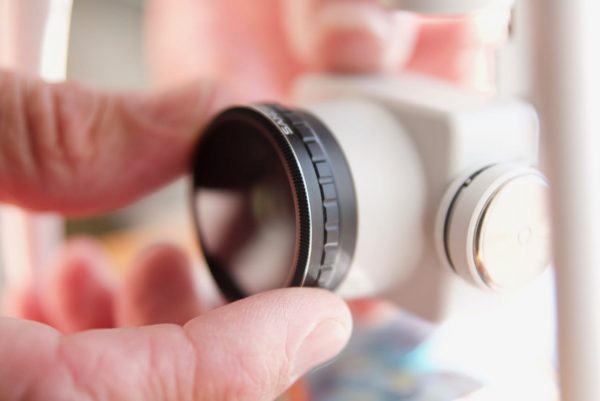
The PL (polarizer filter) can be rotated once it is on the Phantom 4 Pro is if you need to adjust it to eliminate unwanted glare and reflections. The problem with flying a drone is you can’t suddenly adjust the polarising filter to the correct position when it’s airborne! In this regard it can be a little hit and miss in regards to where you set it before it takes off.
Sandmarc Aerial Filters: price and availability
The Sandmarc Aerial Filter pack for the Phantom 4 Pro does a good job at maintaining sharpness, but it does have a slight colour shift. The filters are available for $69.99 US.





